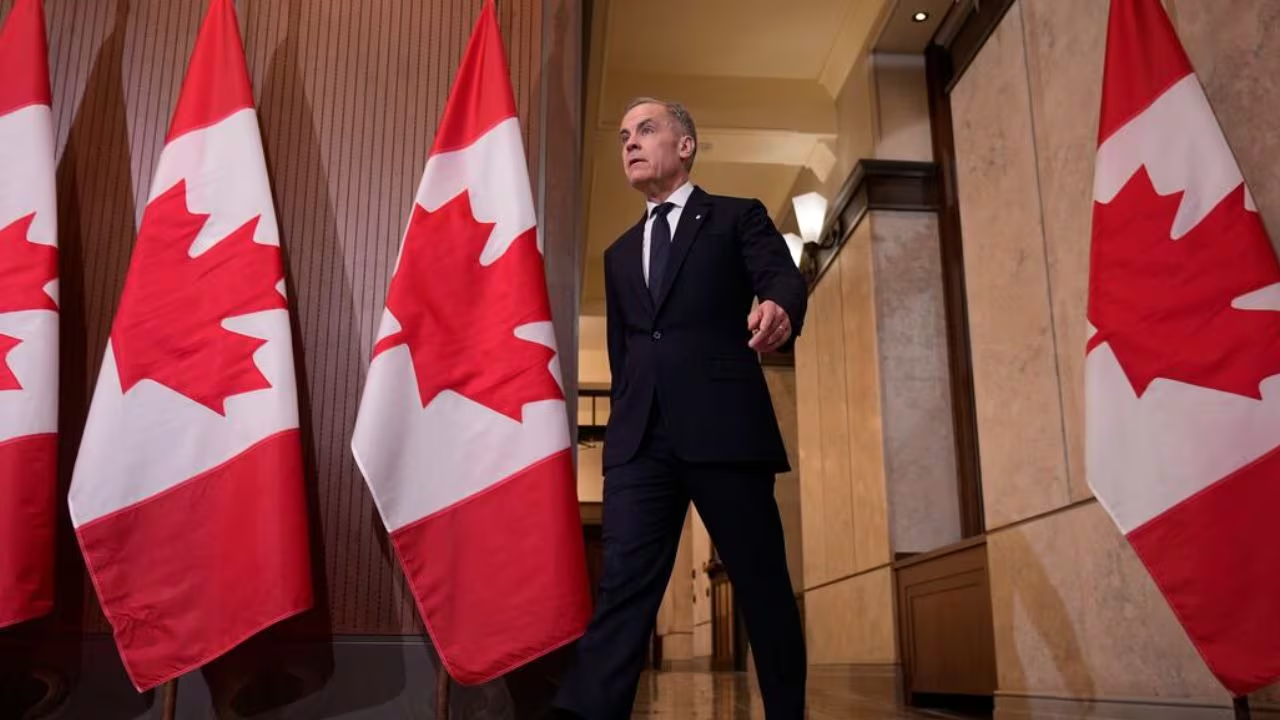The global financial landscape was rocked on Thursday as the U.S. stock market suffered its worst single-day loss since 2020. This dramatic downturn came in the wake of a major escalation in the trade conflict initiated by the United States, prompting swift retaliatory action from its closest trading partners, including Canada.
At the heart of the turbulence is the intensifying trade war sparked by U.S. President Donald Trump’s aggressive tariff strategy. The latest round of levies, implemented with little warning, imposed sweeping import taxes on a broad array of goods from numerous nations, targeting not only economic adversaries but also long-standing allies. The move sent shockwaves through global markets, stoking fears of a prolonged and destabilizing economic conflict.
Speaking from Ottawa, Canadian Prime Minister Mark Carney did not mince words in responding to the developments. He confirmed that Canada, though initially spared from some of the U.S. baseline tariffs, is now facing steep new duties on select categories of goods. In response, Carney announced a retaliatory measure in the form of a $35.6 billion tariff package aimed squarely at the American auto industry. This measure mirrors the U.S. tariffs and is designed to strike at a sector considered vital to both nations’ economies.
“This is a turning point in our trade history with the United States,” said Carney during a press conference. “While Canada continues to regard the U.S. as our key ally in matters of security and defense, this latest move marks the end of the traditional, stable economic partnership we have enjoyed for generations.”
The response from financial markets was swift and unforgiving. Wall Street ended the trading session deep in the red, as all three major indexes posted severe losses. The Dow Jones Industrial Average, S&P 500, and Nasdaq Composite all closed sharply lower, wiping out billions in market value in a single day. Traders and analysts cited fears over the long-term implications of disrupted supply chains, rising consumer prices, and uncertain diplomatic relations as key drivers of the sell-off.
“Investor confidence has taken a hit,” remarked one Toronto-based economist. “The unpredictability of U.S. trade policy is creating an environment where markets simply can’t find stable footing.”
Despite the market turmoil and growing criticism from global leaders, President Trump remained confident in his approach. When questioned about the fallout, he simply stated, “I think it’s going very well.”
However, economic experts have cautioned that if this trajectory continues, it could lead to a significant slowdown in global growth, particularly if other countries follow suit and engage in tit-for-tat trade retaliation. Already, whispers of looming job losses and rising costs for manufacturers and consumers are circulating, especially within industries like automotive, agriculture, and consumer electronics.
The path forward remains murky. With tensions escalating and both sides digging in, the possibility of reaching a swift resolution seems increasingly unlikely. As world markets brace for continued volatility, global leaders are being called upon to seek diplomatic solutions before the economic damage becomes irreversible.
For now, one thing is clear: the era of stable trade relations between the U.S. and its closest allies may be over, and the consequences are reverberating across the globe.



0 Comments